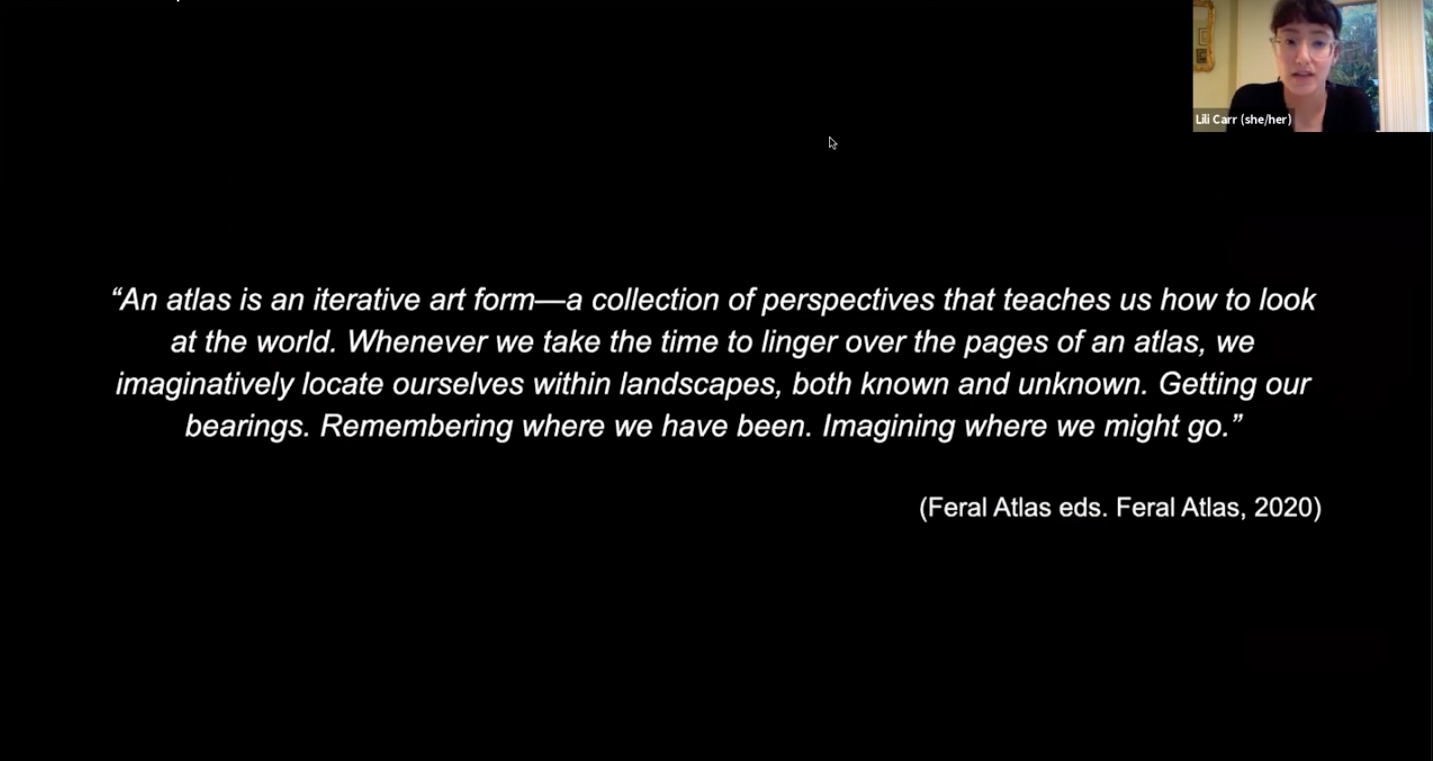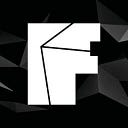
Mahdi Nasser is a researcher and currently pursuing a Master’s degree in Contemporary Theatre, Dance and Dramaturgy at Utrecht University. His interests lie at the intersection of art, ecology and technology within the broader field of performance. This article was written during FIBER’s Reassemble Lab Part 1: Weaving With Worlds, which took place (online) from 14 June to 27 July 2021. Under the title Weaving With Worlds, we collectively investigated the possibilities and potential of worldbuilding to give imagination to much needed planetary transformations. Our sessions ranged from crafting stories through worldbuilding eco-fiction, applying non-human ways of story development with machine learning and exploring scanning and simulation technologies used to construct characters and environments. There are many prototypes still being developed by collaborators from the lab, some of which will be presented at the upcoming FIBER Festival October 28–30.
The question of what makes a world came up often during part one of Reassemble Lab “Weaving with Worlds.” It was not something only the participants would wonder and ruminate on, but it also very much seeped into the minds of those giving lectures and presenting these other worlds. Not to mention the communication and production team behind the organisation of the lab.
To define “world” is no straightforward task. And, perhaps, we should not be concerned with trying to define it, as the more we think we understand what it is the more the opposite becomes true. It is as if there is a kind of universal feeling that prompts us into believing that there is such a thing as a world, and that, when we speak of it and wish it could be different, what we are really talking about is life.

Layers of life stack on top of each other, connected by the push-and-pull of natural forces, allowing us to perfect our vision and zoom-in and out to the extent of concluding that there is always more than we thought there was. Ecological philosopher Timothy Morton rightly suggests that “True planetary awareness is the creeping realization not that ‘We Are the World,’ but that we aren’t.”¹ By criticising the unconsciously inherent anthropocentric view of the individual, who thinks they have unlimited right and access to all derivative earthly matters, Morton makes the case that, ultimately, it is not about us.
Faced with climate change, this becomes even more relevant. And the idea of a self-contained world disappears. We slowly come to terms with our conscience and realise that everything is interconnected, that we live in some kind of hyper-dimensional space where non-locality seems to be the prevalent and recurrent mode of thinking about stuff. The stuff of our own bodies, our minds, the stuff the Earth is made of and the infinite ways we can access them, without denying the possibility for the opposite to be also true. The basic idea of non-locality is that, for us to be talking about anything is becoming ever more difficult due to a lack of some ontological premise: we do not know what things are anymore. Directly pointing at things has become a hard task, especially in a global climate crisis, where we see objects no longer as inhabiting a pre-constructed reality for the human but instead as a reminder of how much we have disturbed the fragile ecological balance to the point of no return.

In 2017, a multidisciplinary group of scholars from Lund, Utrecht, Durham, and Warwick Universities came together to think through the multiple ways in which culture might shape the various narratives surrounding climate futures. Together they engage in contemporary worldbuilding practices, drawing on critical and creative climate future studies. Operating under the name Climaginaries, the group has developed and curated a speculative performance piece (set in a not-too-distant future) called Carbon Ruins. Carbon Ruins is a museum exhibition of the future presenting everyday objects as ruins of the fossil era. It shows the underlying toxicity of a long forgotten unsustainable practice that was once based on extraction and exploitation of the earth’s natural resources.
Climaginaries joined Reassemble Lab to share their experience of thinking through Carbon Ruins and its critical method with the participants. They ask: What does it mean to envision a future “world” without fossil fuel? We base the very act of imagining on the idea of an alternative other; “what if,” we might ask, the world could be different? By focusing on the objects that make up the “reality” of everyday life, Climaginaries moves the conversation on climate change and related issues to the foreground, creating a space for people to engage directly with the problem of carbon, which is not a problem as such, more the way we think and interact with it which is highly problematic. Indeed, Carbon Ruins, other than hoping to drive behaviour change among its spectators, seeks to re-imagine our relationship with western extractivist and consumerist practices, in this way destabilising our distorted perception of a healthy and liveable “world.”
What is interesting about Climaginaries’s practice is their choice of making the invisible visible. We all know at this point that the major challenge within the climate change discourse is to make people believe that it’s happening and is embedded in everything around us. But how do you make something tangible for people to experience visually, if the stuff that constitutes the climate is sensorially impossible to perceive? Atomic particles like carbon don’t have bodies of their own, or at least, a body I can rationalise without the use of any measuring tools. Those particles make sense to non-scientists only when they come together in the form of a chair or a table, signifiers that can be further understood through semiotic processes operating as the basis for all kinds of modes of communication. By showing the materiality of the stuff the synthetic grass, or the Lego are made of (mainly carbon), Climaginaries can deconstruct the idea of a pre-packaged world dictated by the belief that things are what they appear to be. They “seek to make the familiar appear strange, and, in so doing, bring the unfamiliar into clearer focus.”²



British architect Lili Carr also joined the lab and introduced the participants to her work on Feral Atlas, a more-than-human Anthropocene collaborative (still ongoing) project. Feral Atlas is based on the collective effort of many anthropologists and ethnographers to keep track of the constant influence human activities and their heavy infrastructures have on non-humans. During her presentation, Lili Carr talked about multispecies perspectives, human and non-human entanglements and the unusual but essential process of thinking in maps, which, ultimately, led to the development of the project. Feral Atlas, which she explains, “[…] includes 79 peer reports, each of which study first-hand the radical shift in ecologies arising from the unintentional collaboration between human-made imperial and industrial infrastructures and non-human entities […].”³

The reports featured in the Atlas are based on first-hand observations of these unintentional collaborations by researchers and others. Every report starts with a map, and each map is embedded in another, showing the interconnectedness inherent in the logic of mapping. Carr further explains that Feral Atlas is both a “worldbuilding practice” and a “knowledge-making process (how to know and knowing differently) and breaks us out from the universalist thinking based on the idea of mastery and control. The more than human Anthropocene needs a transdisciplinary approach, one that welcomes multiple perspectives.”⁴ Here, a critical cartography requires an understanding of “world” that goes well beyond anthropocentrism, and which cannot be reduced to a single, fixed, purely human driven mode of looking. The idea of maps within maps in Feral Atlas, which Lili Carr mentions in her presentation, points to the non-existence of a world dwelled exclusively by humans and gives insights to what we normally grant the identity of “world.”

“Weaving With Worlds’’ aimed at introducing the participants to different contemporary worldbuilding practices based on speculative storytelling. Both Climaginaries and Lili Carr were invited to share their thoughts on how to implement strategies of change in worldbuilding environments, (re)constructing and deconstructing old and conventional ideologies around “world” views and everything found in-between. Reassemble Lab, in its entirety, provided a space where fiction was the default mode of communication for imagining a better co-existence with our dear non-humans.
[1] Morton, Timothy. Hyperobjects : Philosophy and Ecology after the End of the World. Minneapolis: University of Minnesota Press, 2013. Accessed September 3, 2021.
[2] Climaginaries, Online Zoom presentation, June 17th, 2021.
[3] Lili Carr, Online Zoom presentation, June 17th, 2021.
[4] Lili Carr, Online Zoom presentation, June 17th, 2021.
Written by: Mahdi Nasser
Edited by: Rhian Morris
